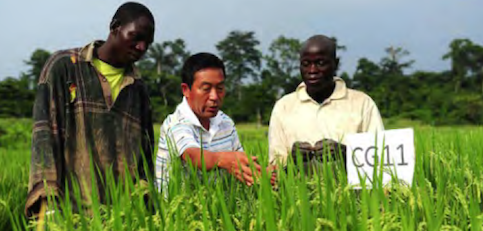Cooperation among developing countries is nothing new. For centuries, they have been helping their neighbours in need, specially at times of humanitarian crises. However, since the early 1990s, the idea of south-south cooperation has expanded rapidly. Today, its presence in the international development discourse is very strong. And South-South cooperation today expands beyond mere humanitarian assistance and goodwill endeavors. Trade and investment between countries in the South is huge. So is knowledge sharing and capacity building. Here are today’s 10 powerful examples of south-south cooperation in practice.
1. Thailand’s South-South Cooperation as an ODA Donor
The Thai International Cooperation Programme (TICP) began in the 1960s when Thailand was still a large recipient of ODA. In 1992, after many years of providing technical assistance, training, and scholarships to other developing countries, Thailand became a donor of ODA with support from Japan and other OECD donors. By 1996, Thai ODA totaled 4,250 million Baht or 170 million dollars. This amount has increased up to 5,927 million Baht in 2001-2008. With a wealth of experiences gained as a recipient of ODA, and its impressive socio-economic development over the past four decades, Thailand is actively sharing with other developing countries its own knowledge of what it takes to rapidly reduce poverty, improve health and education, and face the challenges of environmentally sustainable development. Much of its ODA goes to its neighbours: Cambodia, Lao PDR, and Myanmar. In recent years, Thailand has also participated actively in other South-South cooperation arrangements beyond its neighbours and region. Currently, more than 50 countries in the Southern Hemisphere are beneficiaries of Thailand’s technical cooperation under a variety of schemes.
2. Turkey: From a Recipient to a Donor
Turkey began providing ODA in 1985 as food aid. Since then, Turkey’s ODA has continued and expanded into many fields. At the beginning of Turkey’s South-South Cooperation programme in the 1980s, Turkey was an aid recipient and did not have a technical cooperation agency to deliver development assistance to other developing countries. Therefore, the programme was implemented by the State Planning Organization (SPO) as the government agency. During the implementation period of South-South cooperation programme, Turkey increased its capacity to deliver development aid. In 1992, the Turkish International Cooperation Agency (TIKA) was established. By 2004, Turkey was providing more o$cial development assistance than it received.
3. Mexico-Chile Horizontal South-South Cooperation: Creation of a Joint Cooperation Fund
Mexico’s Constitution has international development cooperation as one of the principles of its foreign policy. Therefore, Mexico sees its international cooperation as a basic tool to promote its foreign relations. Mexico is increasingly evolving into a dual player in international cooperation for development, as both donor and recipient.
The Mexican Government has recognized that o!ering cooperation to other developing countries is a powerful instrument to promote development through the creation and strengthening of technical capacities. Mexico is a true promoter of South-South cooperation (SSC). It recognizes that SSC can complement cooperation from traditional donors, enabling both the donor and the recipient country to better accomplish their own development goals. Mexico has also encouraged SSC as a means of showing its solidarity, especially with countries in Latin America and the Caribbean, and maintaining a high profile in its bilateral relations with the countries in the area.
In 2006, Mexico and Chile established a Strategic Association Agreement (SAA) that included not only political and commercial components, but also promoted international cooperation. The SAA was conceived by both countries as a mechanism for deepening the bilateral relationship through the exchange of technical assistance, enhanced dialogue, and projects that foster the development of technical capacities taking advantage of each one’s comparative advantages. For Mexico, a path-breaking feature of the SAA was the creation of a Cooperation Commission and a Joint Cooperation Fund, through which each country provides US$ 1 million dollars during a 3-year period to finance bilateral cooperation projects. Since Mexico’s Congress approved the SAA with Chile, the funds are earmarked each year to cover cooperation programmes under this scheme.
4. Pro-Huerta Project (Argentina-Haiti)
Argentina provides technical cooperation through the Argentine Fund for Horizontal Cooperation (FO-AR) since 1992. At the beginning, the Fund worked in the neighbouring countries; its cooperation has now spread throughout Central and Latin America and to countries in other regions, such as Africa. Within the region, priority countries include Bolivia, Paraguay, and Haiti. The Pro-Huerta project in Haiti started in 2005. It aimed at increasing production of fresh food for the Haitian people. Under the FO-AR, the project was implemented by the Argentina National Agricultural Technology Institute (INTA). (>>Continue Reading)











